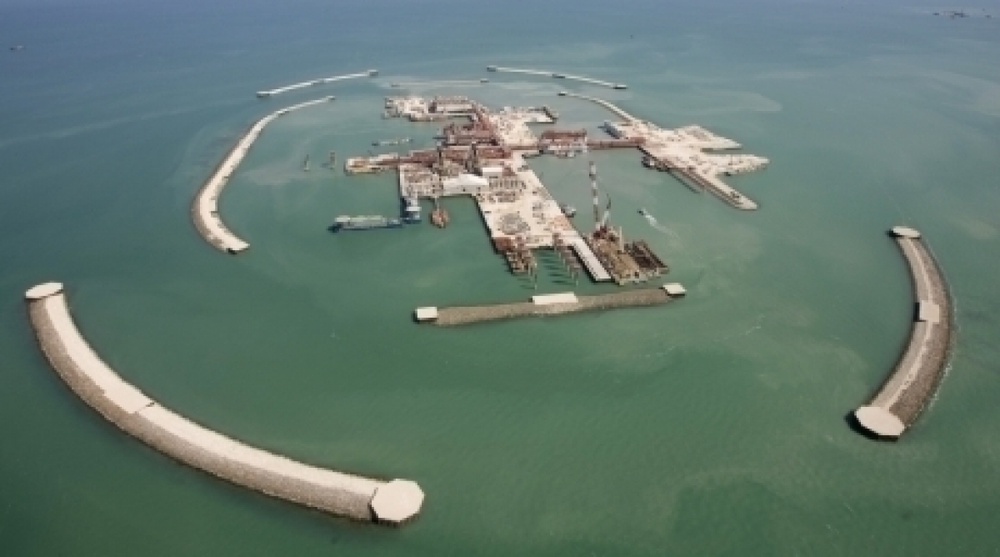
The scale of a possible oil spill at the giant Kashagan oilfield in the Caspian offshore may be even worse than that of the oil spill in the Mexican Gulf, whereas the Kazakhstan’s emergency services are not ready for such disasters, Newskaz.ru quotes the country’s Environment Minister Nurlan Kapparov as saying. “Oil production at Kashagan is set to start in 2013. The country is not yet prepared for possible oil spills. Should a spill occur, it may have more disastrous consequences than those we saw at the Mexican Gulf”, Mr. Kapparov said February 10 at the sitting of the Nur Otan anti-corruption committee. He believes it important to launch a powerful service to tackle oil spills. The Kashagan field, named after a 19th century Kazakh poet from Mangistau, is located in the Kazakhstan sector of the Caspian Sea and extends over a surface area of approximately 75 kilometers by 45 kilometers. The reservoir lies some 4,200 meters below the shallow waters of the northern part of the Caspian Sea and is highly pressured (770 bar of initial pressure). The crude oil that it contains has high ‘sour gas’ content. The development of Kashagan, in the harsh offshore environment of the northern part of the Caspian Sea, represents a unique combination of technical and supply chain complexity. The combined safety, engineering, logistical and environmental challenges make it one of the largest and most complex industrial projects currently being developed anywhere in the world. According to Kazakhstan geologists, geological reserves of Kashagan are estimated at 4.8 billion tons of oil. According to the project’s operator, the oilfield’s reserves are estimated at 38 billion barrels, with 10 billion barrels being recoverable. Besides, natural gas reserves are estimated at over 1 trillion cubic metres. The consortium developing the field comprises Eni, Shell, ExxonMobil, Total and KazMunaiGaz (all with a 16.81% stake) as well as ConocoPhillips (8.4%) and Japan's Inpex (7.56%). During the talks May 18, 2011 with Kazakhstan’s President Nursultan Nazarbayev, Paolo Scaroni, Eni Chief Executive Officer and General Manager, promised that “the first oil is expected in December 2012 or two-three months later than that”.





The scale of a possible oil spill at the giant Kashagan oilfield in the Caspian offshore may be even worse than that of the oil spill in the Mexican Gulf, whereas the Kazakhstan’s emergency services are not ready for such disasters, Newskaz.ru quotes the country’s Environment Minister Nurlan Kapparov as saying.
“Oil production at Kashagan is set to start in 2013. The country is not yet prepared for possible oil spills. Should a spill occur, it may have more disastrous consequences than those we saw at the Mexican Gulf”, Mr. Kapparov said February 10 at the sitting of the Nur Otan anti-corruption committee.
He believes it important to launch a powerful service to tackle oil spills.
The Kashagan field, named after a 19th century Kazakh poet from Mangistau, is located in the Kazakhstan sector of the Caspian Sea and extends over a surface area of approximately 75 kilometers by 45 kilometers. The reservoir lies some 4,200 meters below the shallow waters of the northern part of the Caspian Sea and is highly pressured (770 bar of initial pressure). The crude oil that it contains has high ‘sour gas’ content.
The development of Kashagan, in the harsh offshore environment of the northern part of the Caspian Sea, represents a unique combination of technical and supply chain complexity. The combined safety, engineering, logistical and environmental challenges make it one of the largest and most complex industrial projects currently being developed anywhere in the world.
According to Kazakhstan geologists, geological reserves of Kashagan are estimated at 4.8 billion tons of oil. According to the project’s operator, the oilfield’s reserves are estimated at 38 billion barrels, with 10 billion barrels being recoverable. Besides, natural gas reserves are estimated at over 1 trillion cubic metres.
The consortium developing the field comprises Eni, Shell, ExxonMobil, Total and KazMunaiGaz (all with a 16.81% stake) as well as ConocoPhillips (8.4%) and Japan's Inpex (7.56%).
During the talks May 18, 2011 with Kazakhstan’s President Nursultan Nazarbayev, Paolo Scaroni, Eni Chief Executive Officer and General Manager, promised that “the first oil is expected in December 2012 or two-three months later than that”.


 +7 (777) 001 44 99
+7 (777) 001 44 99















































